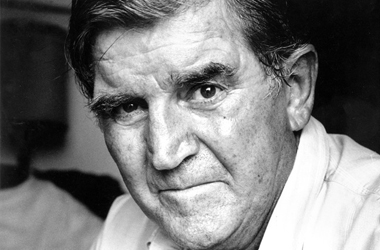Fred Hollows

Hollows was born on 9th April 1929, was a New Zealand and Australian ophthalmologist. Hollows became more popular for his work in restoring eyesight for most of the Australians. Because of him more than millions of people in the world can see today, the most notable example being The Fred Hollows Foundation.
Early Life
His was born in Dunedin to Joseph and Clarice (Marshall) Hollows and has three brothers Colin, John and Maurice. He and his family lived in Dunedin for many years. At the age of 13 he did his schooling at Palmerston North Boys' High School and primary schooling at North East Valley Primary School for one year. He did his BA degree at Victoria University of Wellington.�
In 1950s and 1960s, he was the member of Communist Party of New Zealand.
He studied ophthalmology at Moorfields Eye Hospital in England in 1961. He did his post-graduate in 1965 at Wales. �At the University of New South Wales in Sydney he was associate professor of ophthalmology. He was chair person at opthamology divison who use to supervise teaching divisions at University of New South Wales, and the Prince of Wales and Prince Henry hospitals from 1965 to 1992.
He married to Mary Skiller in 1958 and after her death in 1975, Hollows married to Gabi O'Sullivan in 1980.
In 1985, he refused to take the award of the Order of Australia. Hollows adopted Australian citizenship in 26th April, 1989 and awarded with Australian of the Year in 1990. In 1991, he awarded with Companion of the Order.
Medical Career
In 1970s, he worked with the Gurindji people at Wave Hill in the Northern Territory and then with the other isolated communities. In 1971, he and his mother with others set up the Aboriginal Medical Service in housing Redfern in Sydney and then he established medical services in aboriginal people in Australia. From 1976 to 1978, he worked as an in-charge of organizing the Royal Australian College of Ophthalmologists to start the program called National Trachoma and Eye Health Program with support of federal government.
Overseas Work
He visited Nepal in 1985, Eritrea in 1987, and Vietnam in 1991 to train the local technicians to perform eye surgery. He arranged IOL laboratories in Eritrea and Nepal to produce and supply lenses at cost of $10 and in 1993 these both labs started working.
Death
In 1993, at the age of 63 he died in Sydney, New South Wales, Australia due to metastatic renal cancer
Recognition and Awards
1981: Advance Australia Award
In 1985, he was a consultant to the WHO.
In 1985, he also offered appointment as an honorary Officer (AO) of the Order of Australian citizen on 26 April 1989.
1990: received Human Rights Medal
1990: named Australian of the Year
In 1990, he awarded with a second Advance Australia Award, for Medicine and Overseas Aid
1991: named Humanist of the Year
1991: named a Paul Harris Fellow by Rotary International
1991: received Honorary Doctor of Medicine and Doctor of Science, University of New South Wales
1991: appointed Companion of the Order of Australia (AC)
1991: awarded Honorary Doctorate of Science, Macquarie University
1991: named the first honorary citizen of Eritrea
1992: received Honorary Doctorate, Queensland University of Technology
1993: received Albert Schweitzer Award of Distinction, Chapman University, USA
1993: received Rotary International's honor, the Rotary Award for World Understanding.
1993: received the Royal Australian College of Ophthalmologists Medal for his years.
1993: posthumously named a Melvin Jones Fellow of Lions Clubs International.
1993: Fred Hollows Reserve in Hollow's hometown of Randwick.
2004: entered into the 'Hall of Fame' at NSW Aboriginal Health Awards.
2005: an operating theatre was named after him in Australia.
2005: named one of "New Zealand's Top 100 History Makers" by Prime Television New Zealand.
2006: named one of the "100 most influential Australians" by The Bulletin magazine.
2010: featured on $1 Coin from the Royal Australian Mint as part of the Inspirational Australians Series.
- Sir Donald Bradman History
- Cathy Freeman
- Elizabeth Kenny
- Dawn Fraser
- Sir Henry Parkes
- Richie Benaud
- Rupert Murdoch
- Sir Marcus Oliphant
- Sir Charles Kingsford Smith
- Sir Howard Walter Florey
- Errol Flynn
- Sir Douglas Mawson
- Cyril Callister
- Lionel Rose
- Michael Hutchence
- Sir Edward Dunlop
- Bart Cummings
- Slim Dusty
- Edward Koiki Sambo
- Phar Lap
- Norman Lindsay
- Greg Norman
- Betty Cuthbert
- Edith Cowan
- Fred Hollows
- Reginald Roy Grundy
- Lawrence Hargrave
- Enid Lyons
- Rod Laver
- Barry Humphries
- Dame Nellie Melba
- Sir John Monash
- Edward Hammond Hargraves
- AC/DC
- Andrew Barton Banjo Paterson
- Margaret Court
- Nancy Wake
- Bruce Kingsbury
- Barry Marshall
- Saint Mary MacKillop
- John Flynn
- Caroline Chisholm
- Vincent Lingiari
Famous Australians
Types Of Visas
Public Holidays
- Australia Day Replacement
- Launceston Cup
- King Island Show
- Tasmania Public Holidays
- Queensland Public Holidays
New Seven Wonders
Immigration Info
- Migrating to Australia
- State Migration Sites
- Immigration Points Calculator
- Protect Yourself from Migration Fraud
- Immigration Advice
Famous Australians
Awards In Australia
Australian Universities
- Charles Darwin University
- University of Western Australia
- University of South Australia
- Queensland University
- University of Tasmania
Australian Prime Ministers
Australian Holidays
Australian History
- Settling in Australia
- Studying in Australia
- List of Cities in Australia by Population
- Shark Killing in Australia Developments
- Australia Time Zones
Australian High Court Judges
Australian Government Structure
- Department of the Treasury
- Department of Veterans' Affairs
- Department of Sustainability, Environment, Water, Population and Communities
- Department of Regional Australia, Regional Development and Local Government
- Department of Infrastructure and Transport

